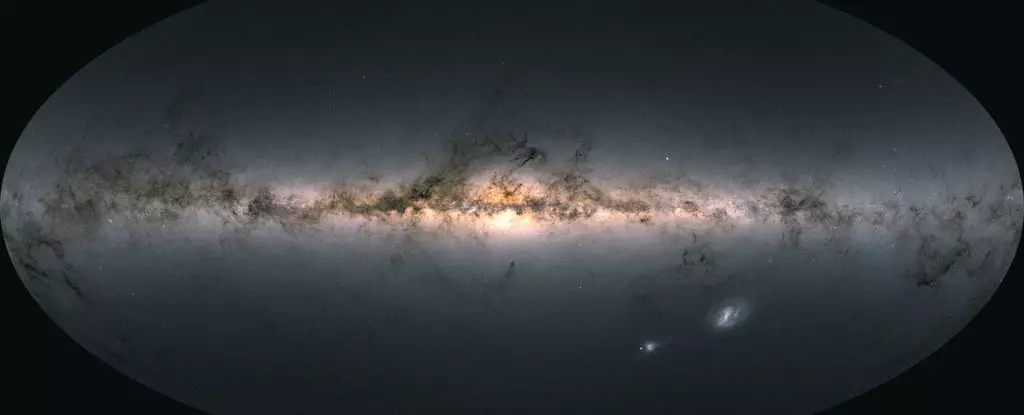Recent astronomical observations suggest that the Milky Way galaxy may be on a collision course with a supermassive black hole, hidden away in the depths of the Large Magellanic Cloud (LMC). This dwarf galaxy, which orbits our own at a gradual pace, contains a mysterious massive object roughly 600,000 times the mass of our Sun. As the LMC spirals closer to the Milky Way, the inevitability of cosmic chaos looms, prompting scientists to delve deeper into the formation and evolution of black holes. Understanding this newly identified black hole could potentially reshape our comprehension of these enigmatic entities in the cosmos.
Traditionally, black holes are elusive; their detection hinges on indirect observations. They emit no visible light unless they are actively consuming matter. This process generates considerable brightness as matter is heated and radiated away, creating a powerful signature. However, scientists often face the challenge of identifying dormant or less active black holes. To overcome this hurdle, astronomers often turn to analyzing repetitive stellar motions and trajectories. The research led by astrophysicist Jiwon Jesse Han and colleagues presents a unique take—focusing not on star orbits but on hypervelocity stars, which travel at astonishing speeds that suggest gravitational interactions with massive bodies.
The Hills mechanism provides an intriguing framework for understanding how hypervelocity stars may reveal hidden black holes. This model involves intricate gravitational dance among three bodies: two stars and a black hole. In such interactions, the gravitational pull can catapult one star into hypervelocity, flinging it into the surrounding cosmic expanse while the other bodies remain relatively stationary. This bizarre twist of fate not only opens new investigative avenues but also enhances our understanding of how black holes can influence their environments.
Using data from the retired Gaia space telescope, researchers conducted pivotal analyses on 21 hypervelocity stars located in the LMC’s outer halo. Notably, their findings align with predictions made by the Hills mechanism. By retracing the high-speed movements of these stellar objects, the researchers identified that several originated from regions near Sgr A*, the well-known supermassive black hole at the Milky Way’s center. This connection underscores a significant potential interaction occurring across vast stretches of space and time.
The dynamics of the LMC’s orbit around the Milky Way make this potential collision an engaging narrative for astrophysicists. Currently, the LMC is roughly 160,000 light-years away, on a trajectory that brings it ever closer to our galaxy. Estimates suggest that the galaxies will begin to merge in around two billion years—a relatively short time scale in astronomical terms. When this event occurs, the concealed black hole residing in the LMC may move toward the Milky Way’s center, ultimately combining with Sgr A*. This process exemplifies one of many conceivable pathways leading to the growth of supermassive black holes over cosmic epochs.
The discovery of this hypervelocity star system, likely linked to the hidden black hole, offers not only insight into the LMC’s gravitational relationships but also contributes critical data to the ongoing exploration of black hole formation. The transition from smaller stellar black holes to supermassive counterparts often hinges on interactions such as mergers, which challenge existing models of black hole growth. This ongoing process could illuminate one of the universe’s longest-held mysteries: how negligible celestial objects morph into colossal giants.
The path ahead for this research is ripe with potential. Confirmation of the black hole’s existence within the LMC will open doors to understanding its properties, including its spin, charge, and its eventual fate in the merger with Sgr A*. With advances in observational technology and methods, scientists are poised to make significant strides in black hole research. Each revelation helps create a clearer picture of not only the fate of our galaxy but also the mysteries lost in the cosmic expanse beyond.
As the Milky Way and the Large Magellanic Cloud spiral towards their eventual rendezvous, the unseen black hole lurking within holds keys to monumental questions about black hole evolution, stellar dynamics, and the ever-expanding universe. The narrative of cosmic collisions continues to unfold, intricately woven with threads of mystery, discovery, and potential calamity—a captivating saga for generations of astronomers to come.


Leave a Reply